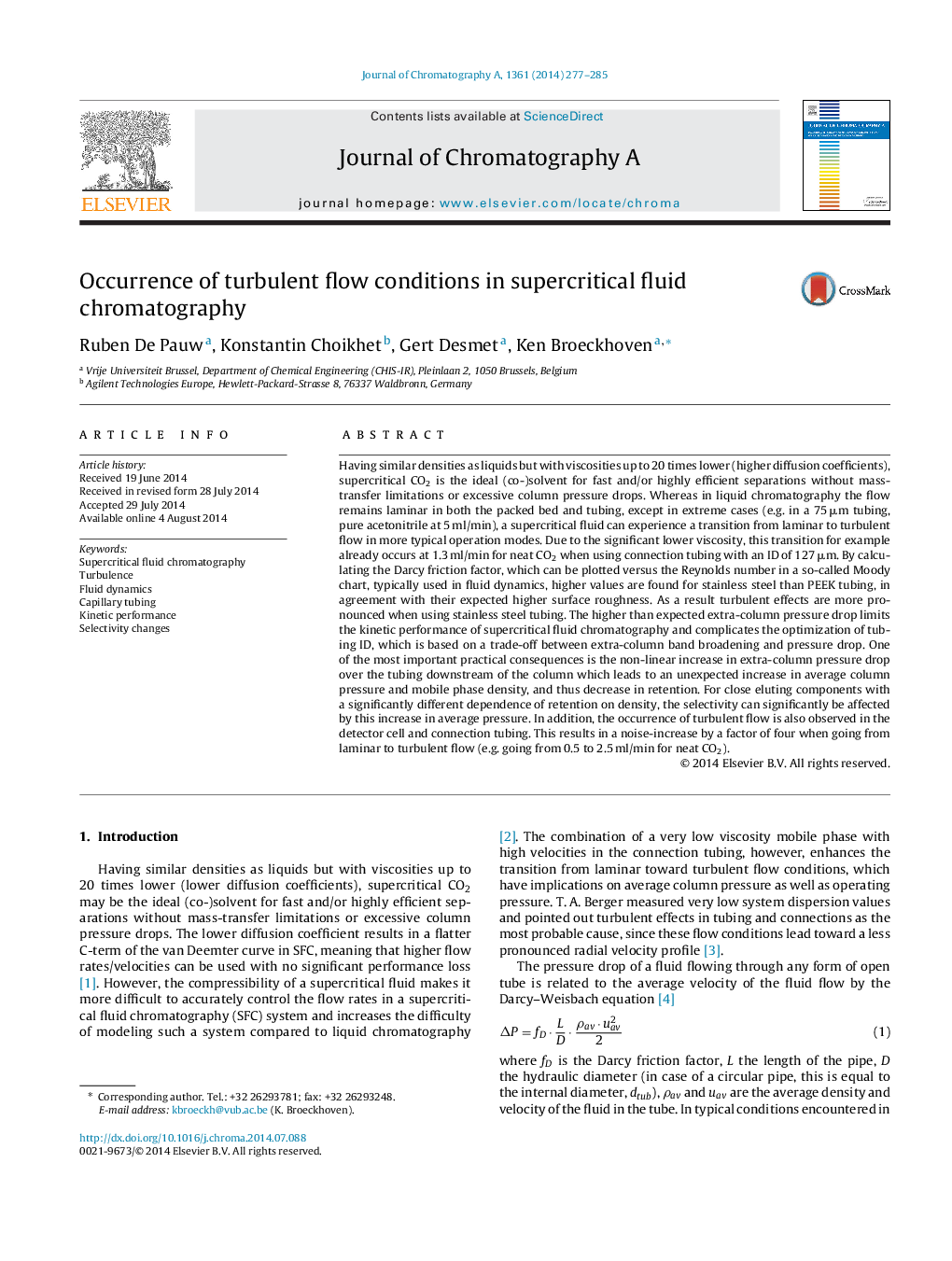| کد مقاله | کد نشریه | سال انتشار | مقاله انگلیسی | نسخه تمام متن |
|---|---|---|---|---|
| 1199308 | 1493565 | 2014 | 9 صفحه PDF | دانلود رایگان |
• Turbulent flow conditions occur in SFC under many practical conditions.
• The influence of different capillaries on the turbulent pressure drop is shown.
• The additional pressure drop due to turbulence decreases the kinetic performance.
• Turbulent flow conditions outside the column change the selectivity in the column.
• Turbulence in inlet tubing and/or detector cell increases the noise level.
Having similar densities as liquids but with viscosities up to 20 times lower (higher diffusion coefficients), supercritical CO2 is the ideal (co-)solvent for fast and/or highly efficient separations without mass-transfer limitations or excessive column pressure drops. Whereas in liquid chromatography the flow remains laminar in both the packed bed and tubing, except in extreme cases (e.g. in a 75 μm tubing, pure acetonitrile at 5 ml/min), a supercritical fluid can experience a transition from laminar to turbulent flow in more typical operation modes. Due to the significant lower viscosity, this transition for example already occurs at 1.3 ml/min for neat CO2 when using connection tubing with an ID of 127 μm. By calculating the Darcy friction factor, which can be plotted versus the Reynolds number in a so-called Moody chart, typically used in fluid dynamics, higher values are found for stainless steel than PEEK tubing, in agreement with their expected higher surface roughness. As a result turbulent effects are more pronounced when using stainless steel tubing. The higher than expected extra-column pressure drop limits the kinetic performance of supercritical fluid chromatography and complicates the optimization of tubing ID, which is based on a trade-off between extra-column band broadening and pressure drop. One of the most important practical consequences is the non-linear increase in extra-column pressure drop over the tubing downstream of the column which leads to an unexpected increase in average column pressure and mobile phase density, and thus decrease in retention. For close eluting components with a significantly different dependence of retention on density, the selectivity can significantly be affected by this increase in average pressure. In addition, the occurrence of turbulent flow is also observed in the detector cell and connection tubing. This results in a noise-increase by a factor of four when going from laminar to turbulent flow (e.g. going from 0.5 to 2.5 ml/min for neat CO2).
Journal: Journal of Chromatography A - Volume 1361, 26 September 2014, Pages 277–285
